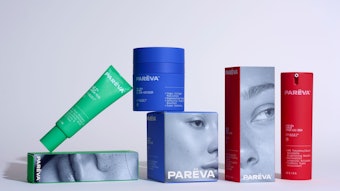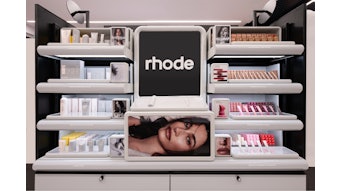
The Polish Union of the Cosmetics Industry conducted a study, titled, “The Cosmetic Industry Versus COVID-19,” which has revealed as many as one-third of cosmetics companies in Poland have faced severely negative impacts as a result of the pandemic.
While production was limited for more than half the companies, 66% of those surveyed were able to maintain employment at previous levels.
However, the potential of the Polish cosmetics industry is inhibited by lack of packaging and raw materials, as well as changing preferences of individual clients.
COVID-19 fighting products
An advantage of the industry has been the ability to produce important products for fighting COVID-19, like hand sanitizer and disinfectants, in correspondence with the ability to quickly adapt production to conditions and market needs.
One in three companies changed its production profile, with antibacterial gels reigning supreme. One-third of cosmetics companies in Poland quickly stopped production, increasing the share of cosmetic products for hand hygiene (including alcohol-based liquids and gels).
- 11% of respondents increased the share of disinfectants classified as biocidal products/medical devices
- It was mostly medium (48%) and large (25%) companies that changed their business profiles
- Micro-enterprises for the most part continued their previous production (63%), as did companies focused on the Polish market (69%)
More than half of all cosmetics produced in Poland are exported, and since cosmetic products, especially those for hygiene and care, are currently very desirable by consumers in all EU countries, some companies, by changing their production profile, were able to make up for losses from other product categories, added Chmurzyńska-Brown.
Unfortunately, the production of antibacterial gels has not become a remedy for problems in the cosmetics industry. Initially, there were market shortages, but the gap was quickly filled and currently there is a high overproduction of disinfectants.
Due to lack of experience, products of low quality, or worse, with too low alcohol content appeared on the market, not providing protection against the pandemic. In addition, producers are faced with continuous high prices of raw materials for disinfectants, spiked further by wholesale dealers.
Changing the market
- 35% of respondents say the situation has seriously affected the company
- 42% of respondents say it has partially affected the company
- More than half of cosmetics companies surveyed reduced operations
- 37% said they continued to work as usual
Blanka Chmurzyńska-Brown, general director of the Polish Union of the Cosmetics Industry, said the effects of the pandemic are felt the most by the smallest and the largest businesses, as well as companies that focus on the domestic market: as many as 80% of companies with a turnover of over €50 million have reduced their operations, as well as most micro-enterprises (62%). Most often, these declarations were made by companies with a share of exports above one-third (59%).
Workplace priority
Most respondents did not reduce employment in the first two months of the lockdown.
- 66% of cosmetics companies kept employment at previous levels; 7% indicated this was affordable due to government employment support programs
- In companies that did have to make cuts, typically did not exceed 10% of staff and mostly included casual workers, or workers near retirement
Interestingly, most redundancies occurred in small and the largest businesses.
- 67% of micro-enterprises and 65% of medium enterprises kept employment at previous levels
- Nearly 75% of respondents are not able to currently assess whether the economic and social situation can cause further reductions in the coming months
- 18%, however, declared that such reductions will take place
After the storm
If the current economic and social restrictions continue, some of our surveyed companies may be able to operate for only another three months.
- 42% of respondents for small and medium-sized companies stated this would be the case
- 37% of surveyed micro-enterprises and small businesses are able to survive up to six months
- As many as half of the surveyed large companies will operate unchanged
It is not surprising that the larger the scale of turnover, the more favorable the prospects for continuing to function under the current economic turnover restrictions—companies with a turnover of €10 to 50 million (38%) and companies with a turnover above €50 million (40%) feel stronger about being able to survive the crises than companies with a turnover of up to €2 million (18%) or those with a turnover of €2 to 10 million (6%), comments Blanka Chmurzyńska - Brown.
Most companies surveyed by the Polish Union of the Cosmetics Industry already have a strategy for continuing to function after restrictions are loosened.
- 43% of respondents assume that a return to the level of activity from before the pandemic will take time
- 25% of respondents believe that returning to pre-pandemic levels will be accompanied by a sharp decline in demand, insolvency or bankruptcy of customers
- 12% of respondents believe in quickly returning to the pre-pandemic level of activity
Companies believe that economic barriers will be a problem in returning to normal operations. These barriers may significantly reduce the potential of companies operating on the Polish market.
The issues different cosmetic companies face is dependent on their size:
- Micro-enterprises are most afraid of the demand barrier of individual customers (70%), as well as on the wholesale market (67%) and problems with maintaining liquidity (63%).
- In turn, small companies fear shortages. Lack of packaging is a key problem for 79% of companies in this group, as are disruptions in the logistics chain of raw materials (71%) or shortages of raw materials (67%).
- Lack of packaging is also a key problem for medium-sized companies (74%) along with the demand barrier of individual customers (71%) and disruptions in the logistics chain of raw materials (61%).
- In turn, large companies complain primarily about shortages of raw materials (70%) and disruptions in their logistics chain (65%), as well as the demand barrier of individual customers (65%).










